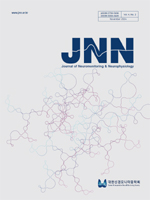
음성치료의 개요
Introduction of voice therapy
- 대한신경모니터링학회
- Journal of Neuromonitoring & Neurophysiology
- Vol.4 No.2
- 2024.11
- 147 - 153 (7 pages)
Voice disorders, resulting from structural and functional abnormalities in the larynx, significantly impact communication, daily activities, and emotional expression, ultimately lowering quality of life. Voice therapy is a key non-invasive intervention for managing voice disorders that arise from structural, functional, or neurological abnormalities in the larynx. Voice therapy includes techniques such as phonation exercises, breath control, resonance training, muscle relaxation, and posture adjustments, all aimed at restoring optimal vocal function. Indications for voice therapy cover a broad range of conditions, including vocal fold nodules, polyps, paralysis, spasmodic dysphonia, and aging-related vocal atrophy. Various voice therapy methods, such as vocal function exercises, resonance voice therapy, and Lee Silverman Voice Treatment, demonstrate improved outcomes in vocal quality, endurance, and overall vocal health. Recent trends in self-managed voice programs, facilitated by smartphone apps and social media resources, are expanding the accessibility of voice therapy. The integration of behavioral, medical, and technological interventions supports a multidisciplinary approach to meet diverse needs in managing voice disorders. This review underscores voice treatment approaches, highlighting their efficacy in addressing various voice disorders and supporting a multidisciplinary framework for optimizing therapeutic outcomes.
서론
음성치료의 적응증
음성치료의 임상적 효과
음성 치료의 이론적 배경
음성 치료 방법
음성 치료의 최근 동향
결론
Funding
Conflict of Interest
Data Availavility
ORCID
References